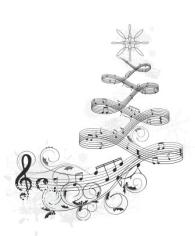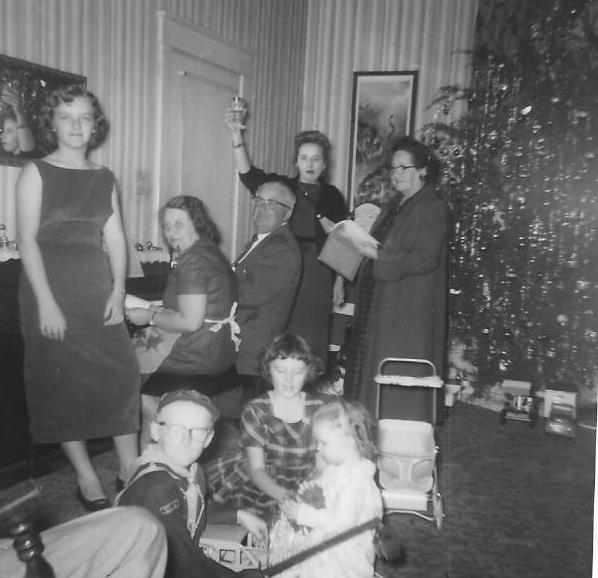Christmas Carols – The Holly and the Ivy
Christmas tunes are everywhere this time of year. One of our family traditions is to gather around the piano and sing holiday songs.  I love sharing the origins of the songs we sing.
I love sharing the origins of the songs we sing.
“The Holly and the Ivy” is one that’s not heard much, though it dates to medieval times. It has an interesting history and staunchly Christian words set to a haunting melody.
There are five verses of the carol. You can read all the words here. I’m sure you’ve heard it. This is the first verse with the refrain to refresh your memory.
The holly and the ivy
When they are both full grown
Of all the trees that are in the wood
The holly bears the crown
Refrain:
The rising of the sun
And the running of the deer
The playing of the merry organ
Sweet singing in the choir
The history behind the carol: Holly and ivy were gathered along with mistletoe and other evergreens to decorate churches, houses, and streets at Christmas as early as the 16th century and probably before. Their shiny green leaves brim with life throughout the winter when most other plants and trees are leafless making them perfect for decking the halls for the holiday.
It may be a relic of pagan midwinter celebrations with the evergreens symbolizing rebirth, the return of the light, and the greening of the landscape in spring. Holly with berries and mistletoe are still used as Christmas decorations.
The words appear in the early 18th century Broadsides printed lyrics, but not the tune. Most likely because different melodies, with local modifications, passed between generations as part of the oral tradition.
One of several carols from medieval England, “The Holly and the Ivy” tells of the rivalry between holly and ivy for mastery of the forest. The holly “bears the crown” so wins the contest; perhaps that’s why we hear no more about the ivy.
Holly was seen as a masculine symbol because of its stouter prickly leaves and ivy is a feminine symbol with its softer leaves. The carol may, therefore, hold a gentle reference to the difficulties of relationships between men and women. The seasonal Christian message is clear in how the song’s words tell the story of Christ’s life interwoven with the life of the holly tree.
Verse 2: “The holly bears a blossom as white as the lily flower” refers to the white flowers Holly produces in late spring. The white signifies the purity of Mary and Jesus.
Verse 3: “The holly bears a berry as red as any blood” refers to Christ’s blood.
Verse 4: “The holly bears a prickle as sharp as any thorn” refers to the crown of thorns.
Verse 5: “The holly bears a bark as bitter as any gall” is another reference to the crucifixion.
The most popular version was first published in 1911. Folksingers popularize the carol in the fifties and sixties. It continues to be a much-loved, traditional Christmas carol immersed with Christian and pre-Christian symbolism.
Enjoy this version by folksinger Judy Collins.

 Christian tradition and the liturgical Church calendar recognize the Christmas season from sundown on December 24 (Christmas Eve) through Epiphany of the Lord (January 6). Most of us celebrated the single day, December 25.
Christian tradition and the liturgical Church calendar recognize the Christmas season from sundown on December 24 (Christmas Eve) through Epiphany of the Lord (January 6). Most of us celebrated the single day, December 25.

 One of our family Christmas traditions was to gather around the piano and sing carols from the church hymnal. A tradition that now includes other instruments.
One of our family Christmas traditions was to gather around the piano and sing carols from the church hymnal. A tradition that now includes other instruments.



